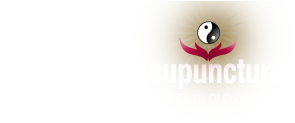Acupuncture Wellness Center
10139 NW 31st Street #101
Coral Springs, FL 33065
(954) 755-1292
Reply to comment
Insomnia

Sleep disorders plague millions of Americans and can be attributed to a variety of causes. Perhaps the main cause of insomnia and restless sleep is the whirlwind pace that most modern people live with day in and day out. Our society emphasizes ‘doing’ much more than ‘being’. From the perspective of acupuncture, the yin aspect of life is quite depleted for the average modern American. In case you have never heard of yin and yang, these are the polar forces that are reflected in everything in the natural world. Yin is related to stillness, tranquility, and contemplation. Yang is related to movement, accomplishment, and function. We need yin and yang to be in balance within ourselves in order to experience true health and wellbeing. When we are yin deficient, we easily become restless, irritable, and excessively busy. Our ability to rest and restore is compromised, as we never seem to get a break from the constant activity in our minds and our lives. This is one of the main dilemmas that we face in terms of experiencing deep states of continuous sleep. We have forgotten how to turn our minds off due to the frantic speed of everything around us and we have become yin deficient.
The common word is stress, but there is a lot more to this picture than is implied. Another way to look at this is that the sympathetic nervous system is on overdrive. We are stuck in fight or flight mode, as we are trying to keep up with our hectic schedules and myriad responsibilities. We have excessive amounts of cortisol and adrenaline in our systems, which keep us feeling amped up and unable to rest. With the pattern of yin deficiency and a hyperactive sympathetic nervous system, we often feel too warm, excessively thirsty, dried out, and anxious. This pattern is extremely common in menopausal women. Due to the fact that we are in fight or flight, we sometimes can’t tell if we are tired. We often feel wired or manic. Yet other times a deep-seated exhaustion is felt that penetrates into our bones.
Reply
Acupuncture Treatment Learn more...
Monthly archive
- January 2018 (1)
- August 2015 (1)
- August 2014 (1)
- April 2012 (1)
- November 2011 (5)
- August 2011 (2)
- June 2011 (5)
- May 2011 (1)
- April 2011 (2)
Tags in Treatments






